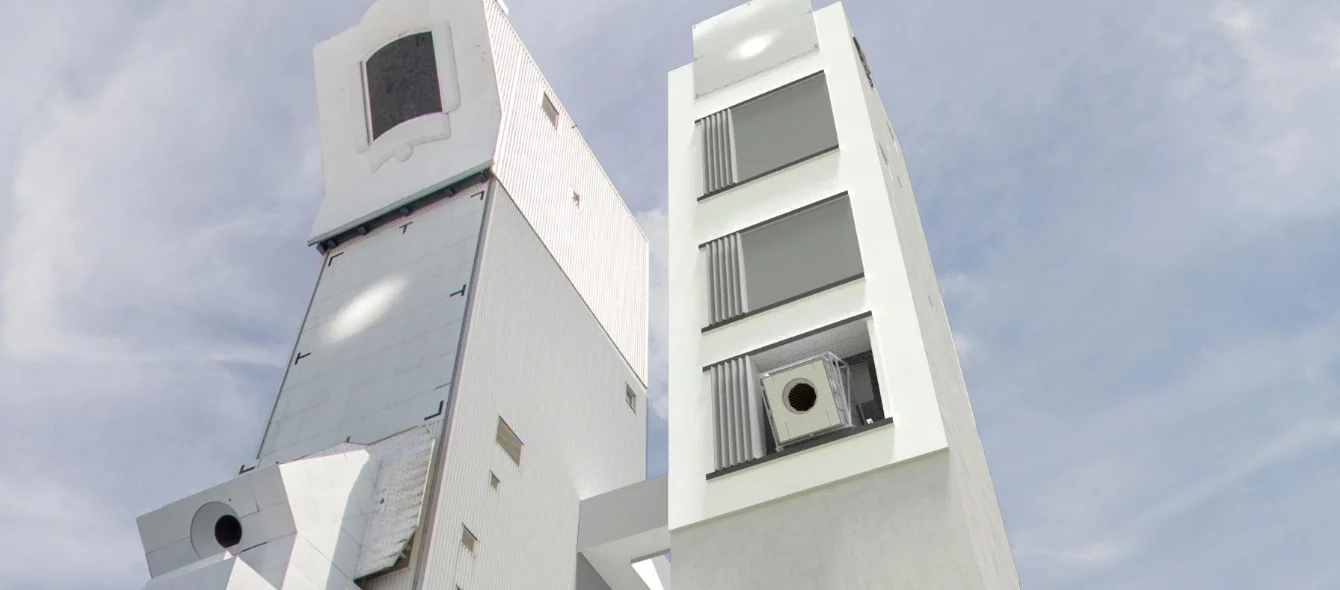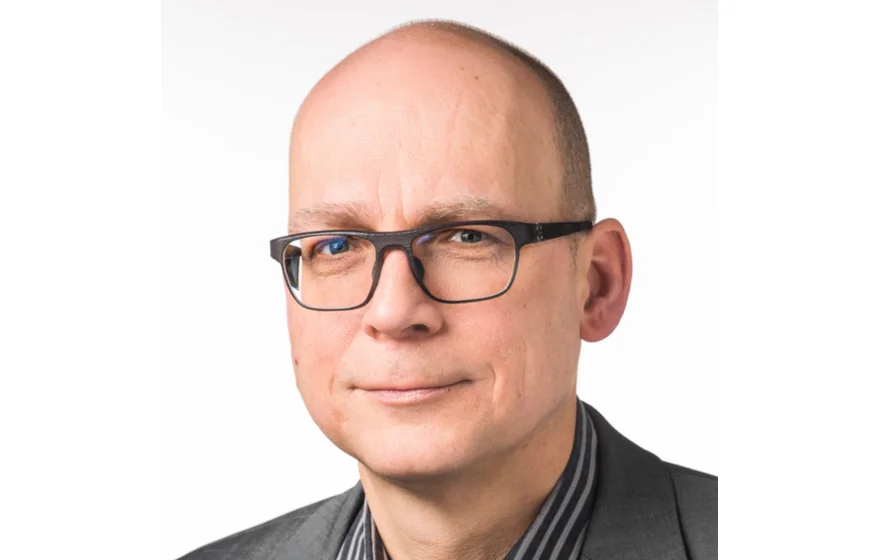Deserts should be the natural habitat of any solar thermal power station, as explained in detail in Parts 1 and 2 of our Solar Thermal Power series. But despite that, one of the most modern research plants for this technology is located in the Rhineland. Germany’s Aerospace Center (DLR) has just inaugurated a second research tower in Jülich. This is a multifocal tower with over 2,000 mirrors reflecting sunlight to one of the three test chambers in which the bundled light produces up to two megawatts of power.
Kai Wieghardt heads up the Solar Power Plant Technology Department of DLR’s Institute for Solar Research. For Part 3 of the series, we asked him for whom he is researching solar heat, how solar thermal technology can counter PV cost erosion, and which innovations await us in the years to come.
Mr. Wieghardt, we won’t see a solar thermal power station in the Rhineland in our lifetime. Why then is one of the leading research centres for this technology located here of all places?
That’s right. Given our sunlight hours, it would be impossible to operate a solar thermal power plant profitably here, but they are more than sufficient to conduct research into the technology. Thanks in part to public subsidies, DLR has been exploring the use of solar energy for 40 years. Experience of this nature provides an advantage that should not be underestimated in such investment-heavy areas. Furthermore, we feel our mission is to be of service to the German economy. German companies contribute up to 40 percent of the value created when building solar farms. However, we also have a site in Andalusia.
Can you tell us which companies conduct research in your facilities?
They cover a wide spectrum. We cooperate with major manufacturers like MAN, which is developing a molten salt receiver with us, and Siemens, the hidden champion of steam turbines for solar farms. Also included are established component producers such as Schlaich Bergermann Partner, whose heilostats we test here, as well as young, innovative companies such as Lufthansa partner Synhelion, which we support in engineering solar-based fuel. Moreover, our research work often culminates in spinoffs, which continue to collaborate with us. Five of these startups have become fairly well established, with a sixth being founded in Spain.
Diese Unternehmen sind Spin-offs des DLR-Instituts für Solarforschung:
A provider of services relating to the construction, operation and quality assurance of solar thermal power stations.
The company builds solar receiver towers in which the heat of the sun is stored in black ceramic particles instead of conventional molten salt solutions.
A specialist in the construction, operation and control of heliostats, which are mirrors that bundle sunlight in solar tower power stations and other applications.
The company builds systems that purify water using beams of sunlight.
Lumoview offers portable systems for measuring the need for energy-optimising retrofits to buildings.
You set up a solar tower with three test chambers this summer. What are you researching in it?
What we’re testing in two of the three chambers is heat transfer media, which absorb the bundled solar heat and generate steam with it. We’re exploring molten salts, which are already the de-facto standard in solar towers, but we also want to use in parabolic trough power stations. In another chamber, we’re working with black bauxite particles which can be pumped similarly to a liquid, but can store heat at higher temperatures. Going forward, we also want to explore whether liquid metal like sodium can serve this purpose, but we’re just at the theoretical stage right now.
The third test chamber is being used to look into solar hydrogen production processes as a thermal alternative to electrolysis. Although this method isn’t competitive yet, we expect that it will clearly best the efficiency of PV-powered electrolysis. In theory, it could outperform PV two to three-fold.
Now these are just the projects that are being conducted in the new multifocal tower, right?
Exactly. All told, we are active in five major fields of research: thermodynamic systems, heat transfer fluids and receivers. Our Solar Chemistry Unit is dedicated to producing chemical energy sources, i.e. predominantly hydrogen. Some of our experts develop new methods and techniques for validating and measuring wear, efficiency, etc. The fourth major field of research is energy meteorology, which involves predicting solar radiation. And in my department, we are working on engineering autonomous solar thermal power stations with a degree of digitisation and automation sufficient for them to be operated nearly entirely or completely without onsite personnel.
This sounds as if the technology still has quite a lot of innovative potential. However, the current cost of generating electricity in solar thermal power stations clearly exceeds that of PV-driven power production. How hopeful are you that this will change?
Actually, the electricity generation costs of these two technologies don’t differ that much from one another. Financing costs are more problematic as investors still don’t trust the technology enough.
But costs aren’t everything. Quality is also important. Solar thermal power stations don’t stop generating electricity when the sun goes down. When equipped with appropriately dimensioned and capable storage systems, solar thermal power plants at good locations can run for up to 7,000 hours a year. Even at the most favourable of sites in the Sahara, PV arrays rarely achieve more than 2,500 operating hours.
However, the biggest advantage of solar heat technology is that it can supply electricity on tap, making it largely suitable for covering base load needs. PV and wind energy need electricity stores to do this – and they’re much more expensive than heat storage systems.
What cost ratios are we talking about here?
Elon Musk has announced a battery capable of storing a kilowatt hour of electricity for 100 dollars. By comparison, a kilowatt hour of heat storage roughly costs a mere 20 dollars. If we assume that thermal energy is converted to electricity with an efficiency of 40 percent, its kilowatt hour costs are about half as high.
Plus, there’s the issue of lifetime. We will only be able to draw empirical comparisons several years from now, but it is safe to assume that the service life of a solar thermal power station matched with a heat storage system is longer than that of a PV system mated to a lithium-ion battery.
Photovoltaics and lithium-ion batteries have experienced a huge drop in price in recent years. Will solar thermal power suffer a similar fate?
PPAs (power purchase agreements) and invitations to tender saw CSP (concentrated solar power) plants record a drop in price to five to seven dollar cents last year. And I believe they harbour further potential, especially owing to economies of scale. Moreover, there is substantial potential for innovation. This is also reflected in interest shown in our research. The recently inaugurated multifocal tower has already been completely booked for the next few years by collaborative projects of various industrial partners.
Having dealt with power production extensively, Part 4 of our Solar Thermal Technology series will be dedicated to alternative uses of the heat provided by the sun and other resources.

